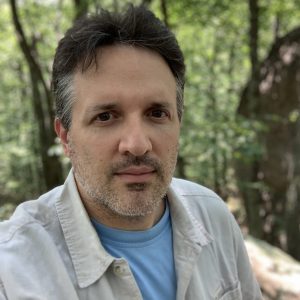From Pete Henderson, Northampton County PDR Committee chair
Northampton County protected a second working farm last week through its Purchase of Development Rights (PDR) Program, with the acquisition of a conservation easement on Nottingham Farm near Franktown. Cousins Butch and Add Nottingham of Nassawadox agreed to permanently restrict land use on their 172-acre property in a deal that combined both the sale and donation of development rights to the county and the Virginia Outdoors Foundation.
The Nottinghams’ conservation easement permits traditional land uses — like farming, forestry, hunting and fishing — but prohibits subdivision or lot sales. “I am very happy,” said Add Nottingham. “This farm would have ended up covered in houses sometime in the future and I am glad it will remain a working farm.”
Nottingham Farm qualified for the county’s PDR program due to its outstanding natural resources and proximity to other protected lands. The farm contains 145 acres of prime agricultural soils, nearly 16 acres of forest and 1,800 feet of buffer on a perennial stream, which supports wildlife and migratory bird habitat. The farm is close to two others protected by conservation easements, 240-acre Happy Union and 157-acre Locust Grove, for a total of 569 acres protected between Franktown and Wardtown.
Northampton County contributed approximately 11 percent of the total value toward the acquisition of the Nottinghams’ development rights, half of which will be reimbursed to the county by the Virginia Department of Agriculture and Consumer Services Office of Farmland Preservation. The county dedicates one percent of its annual Transient Occupancy Tax (TOT) revenue, paid by visitors to local hotels, motels and campgrounds, to the PDR Program to preserve the working lands that are such a distinctive feature of the Eastern Shore.
The Nottinghams donated 25 percent of the easement value, while the remaining 64 percent was covered by a complicated array of state and federal grants. Peter Stith, the PDR Program Administrator in the county’s Department of Planning and Zoning, coordinated the easement acquisition with guidance from the Board of Supervisors and an appointed committee of farmers, conservationists and public servants.
“The purchase of a conservation easement with multiple funding sources can make for an extremely complex and challenging real estate transaction,” said PDR Committee member Dave Harris of the Nature Conservancy. “Peter Stith did a great job meeting the requirements of the four funding agencies and coordinating all of the paperwork necessary to bring this transaction to closure.”
The Northampton County PDR program is voluntary, but landowners must meet certain criteria to be eligible for consideration. At least 50 percent of the tract must contain prime agricultural soils based on the most recent maps in the county’s Planning and Zoning Department. The property must be located in either an A-1 Agriculture or Conservation zoning district or the Agriculture/Forest Land Use Area, as mapped on the Future Land Use and Development Map in the County’s Comprehensive Plan. The easement serves as a permanent deed restriction that limits future development and requires the landowners to implement forest management plans and best management practices for farming.
Maintaining productive farm and forest land can yield Northampton County tremendous savings by offsetting the cost of providing public services, like roads or utilities, to rural areas. A recent Cost of Community Services study by the American Farmland Trust indicates that for every $1 collected in real estate taxes, $1.19 is spent on services for residential development compared to just $0.37 required in services for open working land.
“The Northampton County PDR Program continues to illustrate how small investments in protecting our rural assets save county taxpayers a lot of money over time,” said Peter N. Henderson, the PDR committee chairman. “Completing a second purchase demonstrates that Northampton residents and county supervisors continue to support the preservation of the county’s rural nature and farming.”
